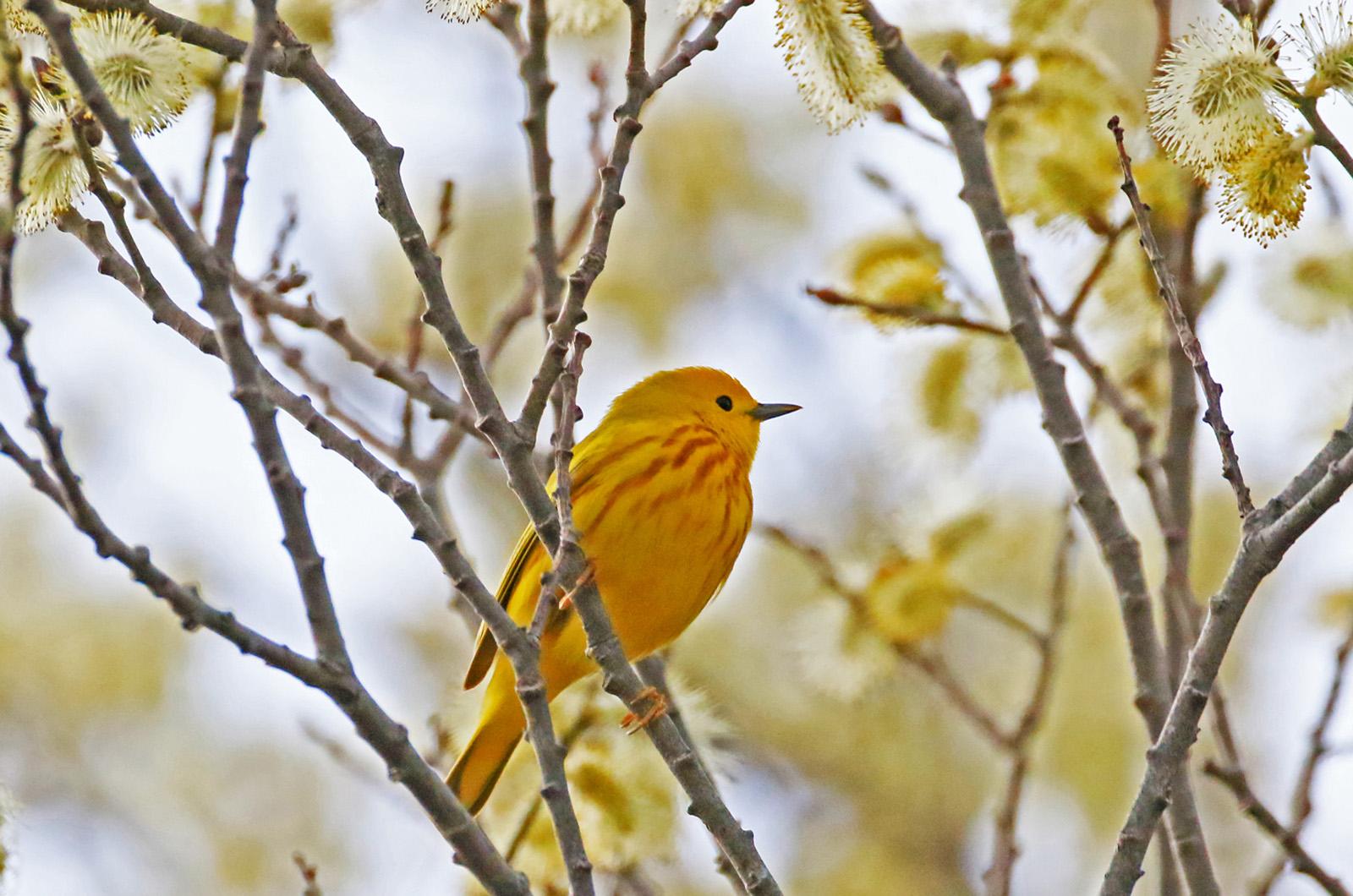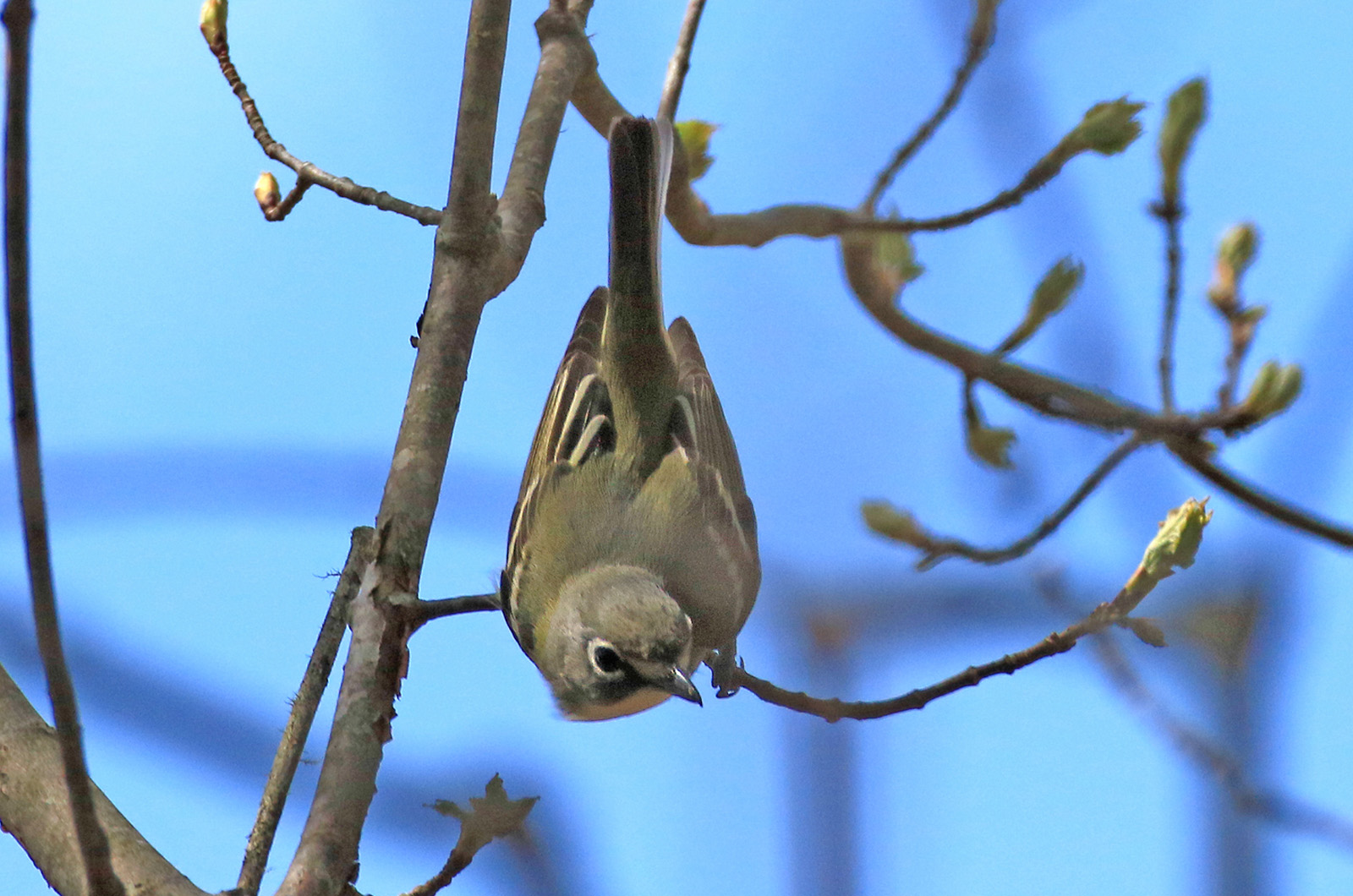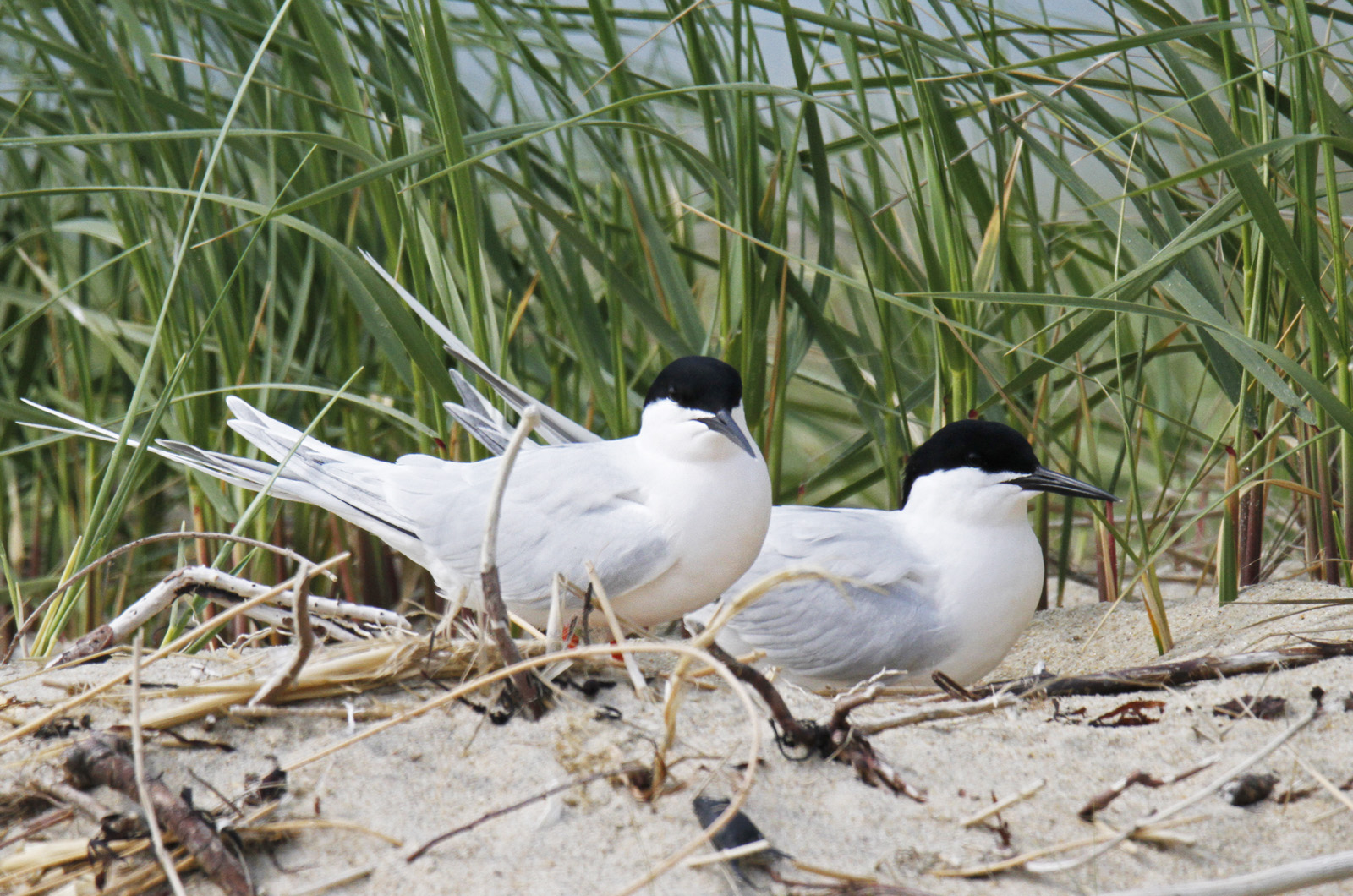It is easy to get caught up with the exciting influx of new species, but remember that these migrants start nesting shortly after they arrive. Looking for evidence of nesting adds another layer of excitement to watching birds. A species becomes a confirmed breeding species when certain behaviors are noticed: a bird carrying vegetation or food, finding a nest with eggs or observing young birds. This is not always easy as birds tend to be rather secretive when nesting.
Cynthia Bloomquist discovered a song sparrow nest with three eggs in her West Tisbury yard on April 24. And Spenser Cain emailed to report three killdeer chicks running around with their parents at Thimble Farm. For an added challenge, try counting how many chicks are present. It is not easy since they are constantly in motion, inconspicuous against the ground, and often disappearing behind plants.
Other likely nesting species include fish crows. They are year-round in downtown Oak Bluffs and have been confirmed as a breeding species there in recent years. They have been sighted in other places outside their normal winter locations of Oak Bluffs and Vineyard Haven. Curtis Waltman found one at Lucy Vincent Beach on April 18, Sky Kardell found one at Wasque Reservation on April 27 and six on Cape Pogue on April 28. Cynthia Bloomquist and Thaw Malin spotted seven at Eel Pond on April 21 and one in their West Tisbury yard on April 23. Nancy Nordin observed eight at Sarson’s Island on April 22, and Margaret Curtin located five in downtown Edgartown on April 23.
Screech owl nest boxes are a good way to document their nesting. Lorraine Stark observed one in her box on April 23.
Now is the peak time for woodcock courtship displays. Norma Holmes, Wendy Culbert and I visited the Disc Golf Course at dusk on April 27 and heard and saw at least one and probably two woodcocks performing their amazing display.
Bird Sightings
Migrants continue to pour in, although at a slower rate that the past two weeks. Their migration rate varies depending on the weather. The peak northward migration occurs in the third week of May.
The first great crested flycatchers have arrived. On April 27 Sea Williams and Bridget Dunnigan saw two of them at Beth’s Way. Nancy Nordin, Bob Shriber, Lanny McDowell, Pete Gilmore, Sea Williams and Bridget Dunnigan found one off North Road in Chilmark on April 27. That same group also spotted a white-eyed vireo at Great Rock Bight on April 27, as well as one ruby-crowned kinglet, one brown creeper, five eastern towhees and one black-and-white warbler.
Townsend’s warblers are a western species. They are an unexpected sighting at any time of the year but are most likely to be seen here in the fall when western strays are more frequent. But just about anything is possible, and Sky Kardell spotted one on Cape Pogue on both April 26 and April 27, and Nancy Weaver found it on April 27.
Other first of season warblers reported this week include a palm warbler found by Nancy Nordin at Sheriff’s Meadow Sanctuary on April 22, an ovenbird observed by Sky Kardell at Mytoi on April 26, and a yellow warbler seen by Rich Couse at the Hoft Farm on April 27.
Sightings of previously reported warblers include the following: Bob Shriber spotted one northern waterthrush and one black-and-white warbler in Aquinnah on April 26, Sea Williams and Bridget Dunnigan saw two northern parulas at Waskosim’s Rock Reservation on April 27, the same day that Sky Kardell saw one on Cape Pogue. Nancy Weaver found the Waskosim’s Rock Reservation parula on April 29.
Yellow-rumped warblers have been here through the winter but they are more abundant now. There are numerous reports of one, two or three yellow-rumps from across the Island, but Cynthia Bloomquist and Thaw Malin watched 40 at Long Point on April 6, Nancy Nordin saw nine at Sheriff’s Meadow Sanctuary on April 22, Chris Scott watched seven at Long Point on April 23, Shea Fee found 14 at Sheriff’s Meadow Sanctuary on April 23, and Sky Kardell counted 20 on Cape Poge on April 26. They will be migrating further north soon.
On April 26 Sky Kardell found a remarkable 62 species on Cape Pogue. This does not surprise me as that area has diverse habitats and is a hotspot for northward migrants just like the Gay Head Cliffs and Aquinnah are hotspots for southern migration in the fall.
Other highlights of his day include 18 black-bellied plovers, one willet, five greater yellowlegs, two red knots, 32 sanderling, six dunlin, one lesser black-backed gull, six red-throated and five common loons, two northern gannets, one green heron, one northern harrier, one merlin, four horned larks, one rough-winged swallow, two ruby-crowned kinglets, one chipping sparrow, one dark-eyed junco, one white-throated sparrow and eight eastern towhees.
Ruby throated hummingbirds are arriving more quickly now. Single individuals were seen this week by Penny Uhlendorf and Scott Stevens, Patsy Donovan, Becky Cournoyer, Connie Alexander, Joanne Carroll, Cynthia Bloomquist and Thaw Malin, Les Cutler, Holly Mercier, Kathy Landers and Sky Kardell.
A blue grosbeak first spotted at the Bayes Norton Farm on April 20 was last seen by Nancy Weaver and Margaret Curtin on April 24. Isabella Colucci spotted a purple finch at Polly Hill on April 21. Rich Couse spotted a merlin near the northeastern corner of Katama Farm on April 25. Bob Shriber spotted a blue-headed vireo in Aquinnah and Sky Kardell found a Wilson’s snipe at Cove Meadow, both on April 26, Sky Kardell observed a house wren at Wasque Reservation on April 27, the same day that Nancy Nordin saw a winter wren off North Road in Chilmark.
Oops, the common tern that I identified on the MV Bird Club trip to Sheriff’s Meadow Sanctuary on April 20 was really a roseate tern. This correction comes after Jeremiah Trimble examined a photo that Thaw Malin took. Nancy Weaver then found a roseate tern on Cape Pogue on April 27, and Sky Kardell found 120 common and 30 roseate terns off Wasque on April 27.
And finally, northern gannets, those large showy seabirds, are showing up in large numbers. Sky Kardell counted 160 of them at Wasque April 22. John Nelson watched an “enormous flock of zillions of gannets incredibly and repeatedly plunge-diving into the ocean in pursuit of fish” south of Wasque on April 27. Off Aquinnah or Chappaquiddick are the best places to see this spectacle.
Please email your sightings to birds@vineyardgazette.com.
Robert Culbert is an ecological consultant with Nature Watch living in Vineyard Haven.







Comments
Comment policy »